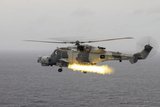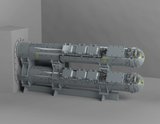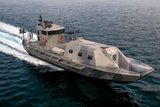Royal Navy’s Type 45 Destroyer Fleet complete
The Royal Navy’s sixth and final Type 45 Destroyer, HMS Duncan, has entered service four months ahead of schedule, and will now begin a programme of trials to prepare the ship and her crew for operational deployment.
The 7,500 tonne vessel was scheduled to enter service in early 2014. Her early handover to the Fleet marks the end of a 13 year build programme with BAE Systems to deliver the six ships – Daring, Dauntless, Diamond, Dragon, Defender and Duncan.
The Type 45s are the most powerful air defence destroyers ever to be deployed by the Royal Navy. All six Type 45s are based at Her Majesty’s Naval Base Portsmouth which will also be the home to the Royal Navy’s Queen Elizabeth Class Carriers.
HMS Duncan measures 152 metres in length and carries the Sea Viper missile defence system, which is designed to be capable of neutralising threats up to 70 miles away.
Philip Dunne, Minister for Defence, Equipment, Support and Technology, said: ‘Thanks to the skill and hard work of the Commanding Officer, the ship’s company and their MoD and industry partners, HMS Duncan has entered service four months early. It is testament to the improving control of projects across the armed forces and significant dedication across defence that all six ships of the Type 45 class are now in the hands of the Royal Navy.
‘The Type 45 programme has provided the Royal Navy with one of the most sophisticated and effective air defence ships available anywhere in the world. We expect these vessels to see decades of service protecting the UK’s interests around the world, including providing humanitarian aid as we saw recently with HMS Daring’s efforts in the Philippines.’
Commander James Stride RN, HMS Duncan’s Commanding Officer, added: ‘The ship’s company is rightly proud to be on-board such a cutting edge warship as she becomes a fully fledged member of the operational Fleet. HMS Duncan joins the Royal Navy as the most advanced ship we have ever operated alongside the rest of the Type 45 class, able to operate across the globe protecting the Fleet.’
More from Naval Warfare
-
![Royal Canadian Navy’s SEA Torpedo Launcher Systems to enter production in Ottawa in November]()
Royal Canadian Navy’s SEA Torpedo Launcher Systems to enter production in Ottawa in November
The article acceptance testing for the TLS is scheduled for the end of 2026.
-
![Netherlands to acquire Finnish littoral assault craft in LCVP replacement programme]()
Netherlands to acquire Finnish littoral assault craft in LCVP replacement programme
The Dutch navy had reportedly been considering BAE Systems’ Littoral Strike Craft to replace its ageing landing craft fleet.
-
![Swedish navy moves to final phase of Blekinge-class sub production with new Saab order]()
Swedish navy moves to final phase of Blekinge-class sub production with new Saab order
Saab Kockums was initially awarded the contract to build two A26 submarines for the Royal Swedish Navy in 2015, but the programme has faced delays and escalating costs.
-
![Germany goes for more US equipment for F127 frigates with SPY-6 radar choice]()
Germany goes for more US equipment for F127 frigates with SPY-6 radar choice
If the foreign military sale request is approved, Germany would be the first country outside the US to acquire the technology, which is currently used extensively by the US Navy.
-
![Beyond GPS: How LEO satellites are changing the game in naval navigation]()
Beyond GPS: How LEO satellites are changing the game in naval navigation
Satellite navigation is increasingly critical for global maritime defence, and Low Earth Orbit satellites are rapidly overtaking the traditional and more widely used Medium Earth Orbit option as they are less susceptible to jamming or spoofing.
























